rent stabilization
description: a form of rent control that limits how much a landlord can increase rent for existing tenants in certain types of housing.
30 results

I Feel Bad About My Neck
by
Nora Ephron
Published 31 Jul 2006
I have had enough psychoanalysis to know not to take such dreams literally, but it’s nonetheless amazing to me that when my unconscious mind searched for a symbol of what I would most hate to lose, it came up with my apartment. Around 1990, rumors began to spread that there was about to be a change in the law: Under certain circumstances, rent stabilization could be abolished, and landlords would be able to raise the rent to something known as fair market value. I refused to pay any attention. My neighbors were obsessed with what might happen; they suggested that our rents might be raised to eight or ten thousand dollars a month. I thought they were being unbelievably neurotic. Rent stabilization was an indelible part of New York life, like Gray’s Papaya. It would never be tampered with. I was willing to concede (well, not too willing) that under certain circumstances there might be some justice in the new law; I could understand that you could make a case (a weak case) that people like me had been getting away with a form of subsidized housing for years; I could see (dimly) that the landlords were entitled to something.
…
The state legislature passed a luxury decontrol law stating that any tenant whose rent was more than $2,500 a month and who earned more than $250,000 a year would automatically be removed from rent stabilization. I couldn’t believe it. I was stunned. I could understand the new law applying to new tenants, but how on earth could it apply it to those of us who had lived in the building for years under the implicit bargain involved in rent stabilization? I had never even gotten a paint job from the building, I’d never even asked for one, and now the landlords were about to treat me as if I were living in a luxury apartment.
…
Mucho grande cappuccinos. I lived in the Apthorp in a state of giddy delirium for about ten years. The tap water in the bathtub often ran brown, there was probably asbestos in the radiators, and the exterior of the building was encrusted with soot. Also, there were mice. Who cared? My rent slowly inched up—the rent-stabilization law gave landlords the right to raise the rent approximately 8 percent every two years—but the apartment was still a bargain. By this time the real estate boom had begun in New York, and the newspapers were full of shocking articles about escalating rents; there were one-room apartments in Manhattan renting for two thousand dollars a month.

Billionaires' Row: Tycoons, High Rollers, and the Epic Race to Build the World's Most Exclusive Skyscrapers
by
Katherine Clarke
Published 13 Jun 2023
“When I used to tell people I met that I lived on Central Park South, they automatically assumed I was rich. They had no idea that it was a rent-stabilized apartment.” At the time, New York’s unusual rent stabilization laws applied to some buildings constructed prior to 1974. Qualifying buildings had to contain more than six units and developers would opt into the program in return for tax exemptions—a decision many landlords would regret in the decades that followed, as New York’s appeal and population exploded anew in the 1990s and 2000s. Having a rent-stabilized unit meant that the maximum rent increase per year for one- and two-year leases was set by the city’s Rent Guidelines Board, which would work to ensure that the housing stock within the program remained affordable and rarely raised it more than a couple of percentage points at a time.
…
It also provided certain protections against eviction. The rent stabilization program differed from the more stringent rent control program, which froze rents completely at a certain price. It was under that program, for instance, that longtime New Yorkers like Thomas Lombardi, whose family moved from Italy to Manhattan in the 1940s, were still paying as little as $55 a month for an apartment in SoHo in 2012. Once units became rent-controlled or rent-stabilized, landlords could return them to market rate only under certain conditions. In the case of rent stabilization, those conditions included if the units were vacated or if the building was subject to demolition.
…
Shimotake, a partner at the prestigious law firm White & Case, and Leighton Candler, a leading luxury real estate agent who had handled the $46 million sale of Brooke Astor’s duplex apartment at 778 Park Avenue, one of the city’s most expensive deals at the time, and who would eventually go on to represent Michael Dell at One57. The seasoned New Yorkers of 220 Central Park South knew that being a rent-stabilized tenant meant they had serious leverage against developers and could potentially extract a payout in exchange for vacating. They quickly formed a tenants’ association to strategize what their next steps should be. “Nobody is an idiot when it comes to real estate in New York,” said Connie Collins, a longtime resident of the building who received the letter. “When you’re living in a rent-stabilized apartment, they can’t just say ‘You have to leave now.’ That’s not how it works.” * * * — IN STEVE ROTH and Veronica Hackett, the eccentric residents of 220 Central Park South had encountered formidable adversaries.

Naked City: The Death and Life of Authentic Urban Places
by
Sharon Zukin
Published 1 Dec 2009
Rent control, the more severe system, prohibits landlords from raising rents without making improvements, and all rent rises must be approved by the New York State Division of Housing and Community Renewal; tenants in rent-controlled apartments cannot be removed. Rent stabilization, begun in the late 1960s, subjects rent increases to the decisions of a citywide, publicly and privately appointed board representing landlords and tenants; in practice, a stabilized rent is subject to increase every year or every other year when the lease is renewed, and, unlike tenants in rent-controlled apartments, tenants in rent-stabilized units can be removed under certain circumstances. Both types of tenants have the right to pass on their apartment to their companion or a family member.
…
By now, however, so many longtime tenants have died or moved away and landlords have been so aggressive at pushing other tenants out, that a lot of rents have been “decontrolled” or “destabilized.” Tenement buildings like this are a checkerboard of speculative opportunities. Only three of the sixteen apartments in this building are still rent-controlled, and six others are rent-stabilized; the remaining seven apartments’ rents have been deregulated. The difference is dramatic. Although the rent-controlled apartments all bring in less than two hundred dollars a month, rents on the destabilized units are ten times higher. No wonder the class world of the East Village has tilted toward gentrification.16 Shop owners insist, though, that the block still has an “authentic” East Village feel.
…
There are stores that have been here for twenty years.” But since Eleanor found the East Village upscale enough to move her shop here in 2001, the block must have found a balancing point between class worlds on which it, like the Astor Cube, is tenuously perched. Ironically it is the longtime tenants, who live in the rent-controlled and rent-stabilized apartments, who create the sociability on which Eleanor thrives. “Another nice thing,” she says, “is the people who live here in this block. When I was renovating the store, they would come in and introduce themselves. Ever since, if I happen to be looking up as they pass, we say hello to each other.

Squeezed: Why Our Families Can't Afford America
by
Alissa Quart
Published 25 Jun 2018
This is what the working poor have long done, of course, to stay afloat. One solution is to broaden rent stabilization, a system that permits a middle class to stay and flourish in expensive cities. I grew up in such a rent-controlled apartment—a book-lined prewar with a sunken living room and a roach problem—that cost far below market rate. Until this year, I lived in a similarly book-lined rent-stabilized unit that has glowing Ashcan School views of water towers to go along with the apartment’s silverfish. Rent stabilization and control go along with better-regulated real estate development overall, especially in desirable cities.
…
Fischer, “Reversal of Fortune,” Boston Review, June 20, 2016, https://bostonreview.net/us/claude-fischer-reversal-fortune-urbanization-gentrification. urban scholar David “DJ” Madden: David Madden and Peter Marcuse, In Defense of Housing: The Politics of Crisis (New York: Verso, 2016). Rent stabilization and control: Rent control started in New York City in 1969 when rents really began to jack up in postwar buildings; today one million apartments are covered by these guidelines, which protect tenants from big rent increases. Some think that rent stabilization helps create a fairer housing market, protecting it from gentrification. Others argue that the price cap on these dwellings reduces supply, thus raising prices around the stabilized or controlled units.
…
My husband and I wound up with an unexpected $1,500 bill after her birth that we hustled to pay; most Americans owe even more, an average of around $5,000. Although we managed to avoid the financial perils that many of the people you will meet in this book experienced—partly because of the wonder of having a New York City rent-stabilized apartment—we did go through a few years of fiscal vertigo. We had been freelance writers for most of our careers, but by the time my daughter arrived this was no longer a stable line of work for the majority of its practitioners, including us. And now we had day-care costs and hospital bills.

How to Kill a City: The Real Story of Gentrification
by
Peter Moskowitz
Published 7 Mar 2017
The building was a mess—the hallway was literally falling to pieces, its front door wouldn’t lock—but the rent was cheap, $1,000 for two bedrooms. And every one of the six apartments in the building was rent-stabilized, meaning rent could only legally be raised by a few percentage points each year. Most buildings built before 1969 with six or more apartments are covered by rent stabilization, but that hasn’t stopped landlords from going into hundreds of apartment buildings in Bushwick and kicking everyone out. There’s not much data on how many people have been illegally removed from rent-stabilized buildings, but a walk around Bushwick suggests that the number is high: if you see an entire old building being gut-renovated in Brooklyn, you can bet the tenants did not leave without being illegally forced out.
…
Their next-door neighbor, who happens to be my ex-boyfriend, was also told to leave his one-bedroom apartment. The building’s board gave him thirty days to get out. He’s now subletting around the city, trying to find a permanent place to live that’s within his budget. A few months later, fearing a similar fate, I tried to find out whether the apartment I was living in should be rent-stabilized. I filed a petition with the state, which starts a process that requires the state to inform the landlord of my petition. The landlord decided it was in his best interest not to renew my lease. I now rent the apartment month-to-month as I await a decision from the state, which could take years.
…
Another week they noticed new security cameras in the building, pointing not at the hallway but directly at each tenant’s doorway. The residents started relaying all the communications to RBSCC. The steps the tenants took were relatively simple, but far beyond what most people do. The only reason landlords buy rent-stabilized buildings is because they know in most cases they can get the people out. Next time one of the new landlords called, Genetta was prepared. “I told them, ‘If you need anything from me, call my lawyer and talk to him,’” she said. “He was speechless.” Genetta and her neighbors are not activists.

Vanishing New York
by
Jeremiah Moss
Published 19 May 2017
Before I could stop them, they took pictures with their iPhones, opened my closet door, and poked around my bedroom. When I waved at them to get out, they told me, “Relax, dude, everything’s fine,” like I was a psychiatric patient in need of de-escalation. Everything was not fine. The new owners have been doing what they can to get rid of me and all the other “stabies,” that impolite term for rent-stabilized tenants. They gut-renovated one apartment, installing it with a pair of fashionable young women who pay $4,000 a month for 400 square feet. They alone are blessed with a washing machine and dryer, which they use daily, causing my apartment to vibrate like a bed in a trashy motel. I can’t say that I love my building.
…
Writing in the Wall Street Journal, John Cale recalled composing with Lou Reed in a fifth-floor apartment, combining the sounds of “Erik Satie, John Cage, Phil Spector, Hank Williams and Bob Dylan” to create “a new form of rock—more about art than commerce.” The poet and downtown legend Taylor Mead, star of Andy Warhol’s hour-long silent film Taylor Mead’s Ass, lived on the street for thirty-four years, until he was displaced from his rent-stabilized apartment at age eighty-eight by real estate tycoon Ben “the Sledgehammer” Shaoul. Mead held out, enduring construction noise and poor conditions, for as long as he could, telling the Post in 2013 that Shaoul “doesn’t give a shit about who I am. It’s going to be hell.” Mead eventually surrendered his apartment, accepting a buyout and leaving New York with the hope of returning one day.
…
One member of the club told Penley via the Post, “We’re going to fill his neighborhood whether he likes it or not. We’re coming with briefcases and BlackBerrys in hand to stake our claim.” At an “Outsiders” art show, in a Bowery restaurant supply shop about to become another upscale pizzeria, Penley stuck dollar bills to the window, each scrawled with slogans like “worthless” and “eat the rich.” To a rent-stabilized tenement building evicted and converted into a single-family mansion by real estate tycoon Alistair Economakis, the Slacktivists brought a guillotine and shouts of “Let them eat shit!” They marched on NYU dorms, the Christodora House, and the John Varvatos shop. And after each action, the Slacktivists would retire for drinks at Mars Bar.

City for Sale: The Transformation of San Francisco
by
Chester W. Hartman
and
Sarah Carnochan
Published 15 Feb 2002
It placed the burden to challenge any increase above that figure on the tenant and stipulated that if the tenant did not make such a challenge within thirty days, he or she lost the right to appeal the increase; it also required tenants to appeal to a mayorally appointed (rather than elected) rent stabilization board. It exempted owner-occupied buildings with four units or fewer. Most significantly, it embodied vacancy decontrol, meaning that in between tenancies landlords were free to raise rents as high as they wanted. The supervisors’ move fulfilled its intended purpose. Whereas San Franciscans for Affordable Housing raised $54,000, the city’s real estate interests waged a $700,000 campaign decrying the evils of strict rent control (sure to produce the kind of building abandonment that would turn San Francisco into the South Bronx), and playing on the theme of “let’s give the Housing Crisis and Housing Movement / 343 new law a chance.”
…
But the law the supervisors enacted was weak, and its passage had the intended effect of undercutting voter pressure to act decisively on the city’s housing crisis. The actual working of the city’s new rent control ordinance has proved to be of limited aid to the renters it was ostensibly designed to serve. Some egregious attempts to impose rent increases greater than 7 percent were foiled by appeal to the newly established Residential Rent Stabilization and Arbitration Board; but in most cases, the appeals process served only to somewhat lower excessive increases, not keep them within the 7 percent 344 / Chapter 13 limit. One major form of evasion was routine, unaudited pass-through of rent increases for alleged capital improvements.61 Relying on tenant complaints to trigger effective implementation of the law was of course a major weakness in the ordinance: The reality is that tenants—particularly lowerincome, minority, and recent immigrant tenants—often are not aware of their legal rights and not likely to use a bureaucratic mechanism they perceive as inaccessible or unresponsive.
…
Led by a new organization, the Affordable Housing Alliance (AHA), it brought about a considerable tightening of the law. While vacancy control was not included, the major revision was to turn around responsibility for exceeding the 7 percent annual limit: Under the amended law, landlords had to seek permission from the rent stabilization board in order to exceed that figure, rather than requiring tenants to challenge an excessive rent increase. And the law was extended indefinitely, rather than having a short-term life. Mayor Feinstein reluctantly signed the bill. 348 / Chapter 13 The Affordable Housing Alliance also worked to develop organized tenant voting power as a lever on supervisorial candidates.

My Misspent Youth: Essays
by
Meghan Daum
Published 2 Mar 2001
After five years and eight different roommates in the 100th Street apartment, I was earning enough money to move to my own place and, more importantly, had garnered enough contacts with established Manhattanites to find myself a two-year sublet in a rent-stabilized apartment. The fact that I got this sublet through a connection from a Columbia professor has always struck me as justification enough for the money I spent to go to school; as we all know by now, the value of a rent-stabilized one-bedroom is equal to if not greater than that of a master’s degree or even the sale of a manuscript to a publisher. And though I still had not hit the literary jackpot by producing the best-seller that would pay off my loans and buy me some permanent housing, I still felt I’d come out ahead in the deal.
…
For me, money has always, truly, been “only money,” a petty concern of the shallower classes, a fatuous substitute for more important things like fresh flowers and “meaningful conversations” in the living room. But the days when I can ignore the whole matter are growing further and further apart. My rent-stabilized sublet is about to expire, and I now must find somewhere else to live. I have friends getting rich off the stock market and buying million-dollar houses. I have other friends who are almost as bad off as I am and who compulsively volunteer for relief work in Third World countries as a way of forgetting that they can’t quite afford to live in the first world.

Cities in the Sky: The Quest to Build the World's Tallest Skyscrapers
by
Jason M. Barr
Published 13 May 2024
So, using this number, if a new building puts your apartment in the shadows for an hour more per day, the developer should pay you 2.6 percent of your home’s value as fair compensation. A: Affordability In New York City, for example, rent stabilization laws—limits on rent increases—remain in effect if the citywide rental vacancy is less than 5 percent. But because rent stabilization reduces vacancies, the program self-perpetuates. Rather than saying, “Vacancy is too low; we need to implement price controls,” cities need to imagine a world where vacancy is always at, say, 10 percent, with so much housing and so many choices that rents are inherently affordable.
…
Bank Center (1973), 168 Mizrach, Bruce, 192 Modernist/International architectural styles Dubai World Trade Centre, 193 energy usage and, 275 FAR-based zoning compatibility and, 52 Khan and, 67 Lake Point Tower and, 186–87 London and, 86, 101–2 post-war development firms and, 65 post-war transitions to, 62, 65–66, 71 Seagram Building and Lever House, 47–48 Yamasaki and, 197 Mohamad, Mahathir bin, 121 Monadnock (1893) (Chicago), 20 money laundering, 249–51 Montauk Block (1882) (Chicago), 6, 20–22 Montreal, Place Victoria Building (1964), 168 Moon, Kyoung Sun, 178 Mujica, Francisco, 48 Mundie, William Bryce, 69 Mundra, Kusum, 192 Napoleonic Wars, 98 Nase, Ilir, 226 Neolithic Revolution, 92 Neom (Saudi Arabia), 211, 212 New Deal, 65 New York City American Radiator Building (1924), 47 Bank of America (BoA) Tower (2009), 272–74 Bank of Manhattan Building, 32, 49 Billionaires’ Row, 239–43, 239, 254, 313n building energy usage and, 273–76 Citicorp Center (1977), 169–70 congestion plan and, 262 Deutsche Bank Center (2004), 249–50 Equitable Life Assurance Society Building (1870), 93 Essex House, 89 FAR rules and, 51, 53, 54, 241, 303n General Motors Building (1968), 90 global economic connectivity and, 236 Heckscher (Crown) Building (1921), 47 Helmsley Building (1929), 89 Home Insurance Company, 23 Lever House (1952), 48, 66 London compared, 92–94 Lower Manhattan, 153 MetLife Tower (1909), 93 One Manhattan West (2019), 60 One Vanderbilt (2020), 188 One World Trade Center (2014), xvii, 147, 173, 188 rent stabilization laws, 260 Seagram Building (1958), 47–48, 47 Singer Tower (1908), 93, 173 Steinway Tower (2021), 241 Tribune Building (1875), 6 urban planning tools and, 50–54, 241 Waldorf-Astoria Hotel, 34–35 Waldorf-Astoria Office Building, 35, 38 Western Union Building (1875), 6 Woolworth Building (1913), 65, 93 Zoning Resolution (1916), 44–47, 46, 50 See also Chrysler Building; Empire State Building; World Trade Center, Twin Towers Newman, Paul, 115 NIMBYism, 253, 260–61, 293 9/11, 60, 192, 198, 201 noncognitive skills (interpersonal connections), 231–34 Northern Metropolis project (Hong Kong), 257–58 Notre Dame de Paris, 6, 17 observation decks Burj Khalifa and, 182, 185, 189 Empire State Building and, xiii, xiv, xv, 38 height and, 219 as revenue, 223–24 Sears (Willis) Tower and, 60–61 Three Brothers and, 147–48 One Canada Square (1991) (London), 102 One Manhattan West (2019) (New York City), 60 One Vanderbilt (2020) (New York City), 188 One World Trade Center (2014) (New York City), xvii, 147, 173, 188 outrigger trusses, 75, 168–69, 169, 240, 309n Owings, Nathaniel, 65 Paris global economic connectivity and, 236 La Défense, 91 Notre Dame, 6, 17 Pompidou Center (1977), 87 Pawlikowski, James, 188 Pearl Tower (Skyscraper), 113 Peck, Ralph, 10 Pei, I.
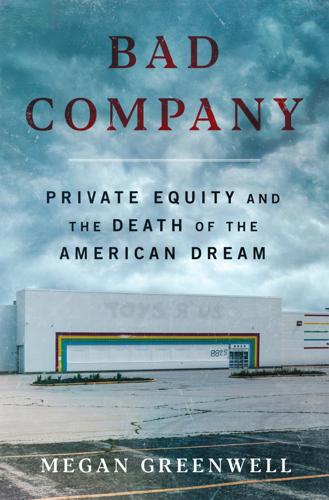
Bad Company
by
Megan Greenwell
Published 18 Apr 2025
That got the firm a $77 million tax break and a $144 million loan from the city, with zero interest. The rest of StuyTown’s units were designated as rent-stabilized—which means strict limits on how much rent can increase each year. That designation was set to expire in 2020, and Blackstone had no intention of renewing it. The tenants’ association sued, and won. A state supreme court judge ruled that under the terms of a 2019 state law strengthening tenant protections, Blackstone could not roll back rent stabilization, as it had planned. StuyTown would remain rent stabilized forever. Though tenants’ associations are still rare, the victory in New York helped drive a wave of organizing in private equity–owned apartment buildings across the country.
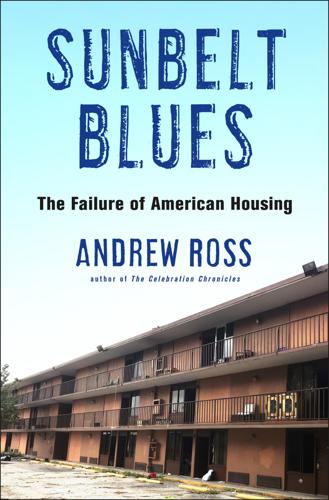
Sunbelt Blues: The Failure of American Housing
by
Andrew Ross
Published 25 Oct 2021
Many of Florida’s counties and municipalities enjoy home rule powers over zoning, taxation, housing ordinances, and other fiscal matters, so where you live matters a lot. These variations make it difficult to apply one-size-fits-all remedies to the problem of affordability. For example, the debate about rent control is red-hot among housing advocates in New York, California, and Oregon, each of which approved rent caps or rent stabilization laws in the past few years, but discussion of this topic is almost nonexistent in most parts of the country.13 In one of my conversations with Osceola’s housing specialist Susan Caswell, I asked her what rent control would look like in her neck of the woods. “That’s so foreign to me,” she said, eyes widening.
…
The scope of the affordable housing shortage demands a government response far beyond the reflex action of just offering more sugar for developers to jump into the game. Simply building more housing units will not provide long-term security for low- and middle-income households without additional guarantees of rent stability or protections against eviction and displacement. Nor will a new commitment to public or social housing succeed unless it is accompanied by policies designed to lift incomes up from decades of wage stagnation and ensure inexpensive access to other public goods like education and healthcare. In response to the soaring costs of those social goods, “Medicare for All” and “College for All” have steadily risen to the top of mainstream progressive policy goals; both were prime-time talking points in the 2020 electoral race.
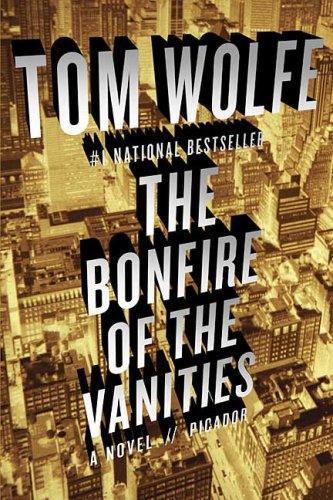
The Bonfire of the Vanities
by
Tom Wolfe
Published 4 Mar 2008
Neither had a window. The place was like one of those little ant colonies you can buy, but it cost them $888 a month, rent stabilized. If it hadn’t been for the rent-stabilization law, it would have cost probably $1,500, which would be out of the question. And they had been happy to find it! My God, there were college graduates his age, thirty-two, all over New York who were dying to find an apartment like this, a 3½, with a view, in a town house, with high ceilings, rent stabilized, in the West Seventies! Truly pathetic, wasn’t it? They could barely afford it when they were both working and their combined salaries had been $56,000 a year, $41,000 after deductions.
…
Rhoda’s mother had come through with her part of the plan, but it was already obvious that this au pair girl who was willing to sleep on a convertible couch in the living room in an ant colony on the West Side did not exist. Rhoda would not be able to go back to work. They were going to have to get by on his $25,000-after-taxes, and the yearly rent here in this dump, even with the help of rent stabilization, was $10,656. Well, at least these morbid considerations had restored his bathrobe to a decent shape. So he emerged from the bedroom. “Good morning, Glenda,” he said. “Oh, good morning, Mr. Kramer,” said the baby nurse. Very cool and British, this voice of hers. Kramer was convinced he really couldn’t care less about British accents or the Brits themselves.

The Future Won't Be Long
by
Jarett Kobek
Published 15 Aug 2017
Baby had no stomach for haggling, so I removed him from the matter, searching for apartments in the Village Voice classifieds until I uncovered a large space on 7th between Second and Cooper Square, diagonally across the street from McSorley’s. A two-bedroom third-floor walkup. The landlord, a Neapolitan named Stefano, informed me that the apartment was rent stabilized, but I hadn’t the slightest what that meant. $700 a month. There was no buzzer for the apartment, so guests would have to scream our names from the street. It was time to bid adieu to 31 Union Square West, to Sun-Yoon and Jae-Hwa, to the students that we’d encountered in the elevators, to the tenants who hated us merely for breathing, to our view of Union Square and the slow construction of the Zeckendorf Towers, to our old Bank of the Metropolis.
…
The drugs goofed up my memory, sure, but the writing was way worse. The more that I vomited out words, the less that my own life maintained its texture, the less that I remembered of my daily existence. My brain couldn’t juggle two realities, couldn’t maintain its focus, so I plunged further into the world that paid the bills, into the world that kept me rent stabilized. Of that entire holiday season, only one thing stands out. A headline that ran in either the New York Post or Newsday: DRAG QUEEN LEFT MUMMY BEHIND. The queen in question, Dorian Corey, died in August. She was famous. You may remember her from the documentary Paris Is Burning. You may not.

Times Square Red, Times Square Blue
by
Samuel R. Delany
Published 1 Jan 1999
But younger tenants cited the “privilege” of better-off tenants in more lavish properties, often paying far higher rents, to forgo such visits. Why shouldn’t the privilege of the better-off be a right—the right of privacy—for all? §1.2. For the last twenty-one years, I have lived in a five-floor walk-up, rent-stabilized apartment at the corner of Amsterdam and Eighty-second Street. In that time, the owner of the building has never been through my apartment door. Once, in 1992, he shouted threats of legal action against §B. During tight times the landlord’s visit facilitated a comparatively humane prioritizing of repairs—allowing tentant complaints to be looked at somewhat more holistically in terms of how much discomfort each involved.

Health and Safety: A Breakdown
by
Emily Witt
Published 16 Sep 2024
They had given me one of two psychedelic experiences that, in all the times of taking drugs, had been singularly transformative (the other was the first ayahuasca trip). One night that year during a snowfall I had taken five grams on an empty stomach from one of these bags—Terence McKenna’s heroic dose—for a solitary introspective journey. It was the first week of 2014. The apartment Matt was subletting was in one of those giant, old, rent-stabilized buildings in south Brooklyn, with grand stone facades and hexagonal-tile floors. It was dingy, fluorescent-lit, and the hallways smelled of cooking. We were trapped among the belongings of the apartment’s usual occupant, who was evidently some kind of spiritualist and had decorated the place with pink Himalayan salt lamps, crystals, and dank tapestries.

Singular Intimacies: Becoming a Doctor at Bellevue
by
Danielle Ofri
Published 31 Mar 2003
Since neurology required at least one year of internal medicine training anyway, I figured I’d do a medicine internship and then either switch to neuro or stay on for the full three years of medicine. Staying at Bellevue was the simplest place to do that since the deans and the attendings already knew me and I could probably squeeze in some flexibility. Besides, I’d found a rent-stabilized apartment two blocks away and I would be breaking the cardinal rule of New York City real estate if I gave it up. I assumed that internship at Bellevue would be just a continuation of medical school, but it wasn’t exactly. For starters, all new interns had to be fingerprinted by a New York City police officer.

Pattern Recognition
by
William Gibson
Published 2 Jan 2003
Your drunken super, come to fix the toilet? Let me know, and if you think I should do anything about it. Are you coming back soon? I thought it was only a short one. Have you seen The World's Biggest Shit? No, don't tell me. Margot Cayce closes her eyes and sees her blue-floored cave, her $l,200-a-month rent-stabilized apartment on 111th, secured when her former roommate, the previous lease holder, had moved back to San Francisco. Home. Who's been there? Not the super, not without a bribe. How she hates this. How faint and peripheral somehow, these little things, yet how serious. A weight on her life, like trying to sleep under Damien's silver oven mitt.

Digital Dead End: Fighting for Social Justice in the Information Age
by
Virginia Eubanks
Published 1 Feb 2011
Only the District of Columbia and a few cities in four states—California, Maryland, New York, and New Jersey—have rent control or stabilization laws. These laws limit how much and when rent can be raised and create a rent control board that, among other things, decides the maximum Conclusion 167 amount a landlord can charge for rental units and conditions under which a tenant can be evicted. Rent control and rent stabilization protect individuals and communities in times of rapid economic change, guarding long-time and low-income residents against displacement during speculative real estate booms. Most small cities, like Troy, lack rent control, and are thus especially vulnerable to rapid gentrification. Like rent control, community benefits agreements (CBAs) protect existing residents in times of volatile economic change.
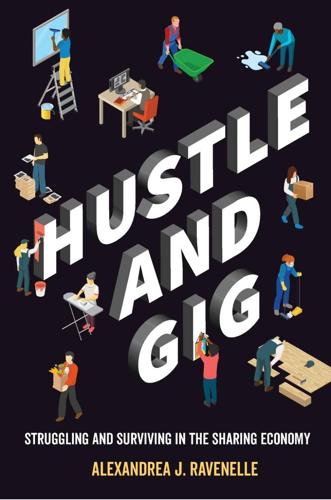
Hustle and Gig: Struggling and Surviving in the Sharing Economy
by
Alexandrea J. Ravenelle
Published 12 Mar 2019
With that reassurance, I told my husband where I was going to be and gave him strict instructions on how and when to check in—and what to do if I didn’t respond promptly. When I arrived at the apartment several minutes early, Yosef wasn’t home, but he soon rounded the corner with a bag of juice and cookies for our interview. Upstairs, he gave me a short tour of his apartment, noting that the two-bedroom rent-stabilized walk-up was his home and his first Airbnb listing—he was responsible for up to twenty-five Airbnb guests per evening. With plans to one day become a professional hotelier, he wasn’t letting his age or lack of degree deter him in the meantime. With assistance from his family, he rented two three-bedroom apartments in Manhattan’s Upper West Side neighborhood that he listed for thirty-night stints as quasi-hostels, with up to two people per bedroom.
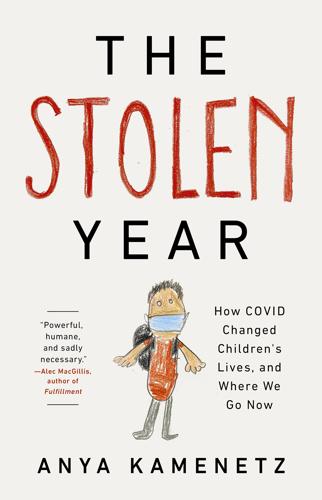
The Stolen Year
by
Anya Kamenetz
Published 23 Aug 2022
Chronic malnutrition, a lack of essential nutrients, is believed to interfere with brain development. Food insecurity, the preoccupation with having enough, is associated with high levels of parental stress, and therefore with mental health problems and behavior problems in children. Sheila lives in a rent-stabilized apartment in the East Village. In 2020 she had seventeen-year-old twins and a nineteen-year-old in special education. She worked in marketing in the travel industry and was laid off on April 2. The date sticks in her mind for two other reasons: “It was my thirtieth anniversary with the company.

Basic Economics
by
Thomas Sowell
Published 1 Jan 2000
Nevius, “When Rent Control Provides a Getaway for the Well-To-Do,” San Francisco Chronicle, June 16, 2012, p. A1. {40} Bay Area Economics, San Francisco Housing DataBook (Berkeley, CA: Bay Area Economics, 2002), p. 21. {41} Mike Schneider and Verena Dobnik, “Solo Living Drops in Manhattan, Rises Elsewhere,” Associated Press & Local Wire, September 6, 2011; Marc Santora, “Rent-Stabilized Apartments, Ever More Elusive,” New York Times, July 8, 2012, Real Estate Desk, p. 1. {42} William Tucker, The Excluded Americans: Homelessness and Housing Policies (Washington: Regnery Gateway, 1990), p. 275. {43} John Tierney, “The Rentocracy: At the Intersection of Supply and Demand,” New York Times Magazine, May 4, 1997, p. 40
…
The Current Housing Problem,” Rent Control, edited by Robert Albon, pp. 5–6. {64} William Tucker, The Excluded Americans, pp. 268–277; Christine Haughney, “For Oscar-Winning Actress, Real-Life Role in Housing Court,” New York Times, August 3, 2011, p. A20. {65} William Tucker, The Excluded Americans, p. 268. {66} David Kocieniewski, “For Rangel, Four Rent-Stabilized Apartments,” New York Times, July 11, 2008, pp. A1, A13. {67} Sally C. Pipes, The Top Ten Myths of American Health Care: A Citizen’s Guide (San Francisco: Pacific Research Institute, 2008), p. 15. {68} Andrew Higgins, “Food Lines: Odd Borders Appear in Russia as Regions Face Poor Harvests,” Wall Street Journal, October 16, 1998, p.

The Rough Guide to New York City
by
Rough Guides
Published 21 May 2018
The enormous limestone Apthorp Apartments occupy an entire block from Broadway to West End Avenue, between 78th and 79th streets, and were built in 1908 by William Waldorf Astor. The ornate iron gates of the former carriage entrance lead into a central courtyard with a large fountain visible from Broadway, though you won’t be allowed to stroll in. The building, recently converted to condos from its former rent-stabilized self, is in a fair enough state now, though its fortunes have hiccuped over the years – it was used as the location for the crack factory in the 1991 movie New Jack City. The Upper West Side above 79th Street has seen a lot of changes in the last fifteen years as the forces of gentrification have surged northward.
…
Remarkable decreases in crime and a revitalized economy helped spur the tourism industry to some of its best years ever. Giuliani emerged as a very proactive mayor and one quite happy to take credit for making the streets safer and city bureaucracy leaner. While he made enemies among progressives for gutting rent stabilization laws and providing massive tax breaks to corporations for moving to or remaining in the city (even as he reduced payments to the poor), Giuliani was handily re-elected to a second term in 1997. The city’s economy continued to grow, and a series of civic improvements, including the cleaning up of Times Square, the renovation of Grand Central Terminal and the influx of chain stores into Harlem, ensued.

The Cheating Culture: Why More Americans Are Doing Wrong to Get Ahead
by
David Callahan
Published 1 Jan 2004
For example, a reporter at Time magazine with seven years experience can expect to make roughly $75,000, while a reporter who's been at the Wall Street Journal for four years is probably pulling down around $55,000. This kind of money doesn't go very far in New York City. I know one journalist who moved to New York to take a plum job in television news, only to find that she couldn't afford an apartment on her salary. Lucky for her, she managed to bribe a building superintendent to get a rent-stabilized place. Reporters at other top publications like the Washington Post, the Los Angeles Times, the Boston Globe and the San Francisco Chronicle are paid well compared to reporters working for smaller papers, who have a median salary of $40,000 a year. Yet all of the big cities have become a lot less affordable over the past decade.30 At the same time, many more young journalists are starting their careers with large loads of student debt incurred by master's programs in journalism—an expensive credentialing process that's become more common as competition has increased for the better jobs in journalism.
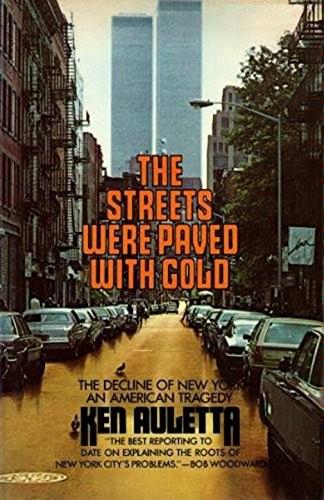
The Streets Were Paved With Gold
by
Ken Auletta
Published 14 Jul 1980
If rich men like Nat Sherman were not in rent-controlled apartments, perhaps more upwardly mobile black families would live on Central Park West rather than move to Scarsdale. In 1975, 1.7 million of the city’s 2.1 million rental units were subjected to some form of rent regulation (either rent control or what is called rent stabilization). If there were a means test and those in controlled apartments paid a fair rent, the Temporary Commission on City Finances concluded after long study, city real-estate tax coffers would be enriched by $100 million per year. The federal General Accounting Office has said the figure would be twice that.

Endless Money: The Moral Hazards of Socialism
by
William Baker
and
Addison Wiggin
Published 2 Nov 2009
It is reminiscent of other dysfunctional markets, such as the New York City housing market, where rent controls created artificial shortages, discouraged investment, repair, and rehabilitation, and led to oddities such as millionaires over the age of 50 living for decades in subsidized one-bedroom apartments while 20-somethings and young families were priced out of the market or paid well over 50 percent of their income for rent. By linking mortgage rates implicitly 220 ENDLESS MONEY to income brackets, the GSEs now supplement the progressive tax rate mechanism of the IRS. Like rent stabilization in New York City, it separates homeowners as much by geography as it does income, because the cost of living on the coasts and in different cites varies considerably. Unprecedented government intervention has occurred in response to the credit meltdown. In 2008 the government mortgage agencies were essentially nationalized, and through the TARP program, nearly $1 trillion was made available to recapitalize commercial banks.

Terms of Service: Social Media and the Price of Constant Connection
by
Jacob Silverman
Published 17 Mar 2015
The next fall, she happily matriculated into the school of her dreams. More than five years later, the dream has curdled. The economy crashed before Nandini even finished high school, and its tepid recovery has done little to improve her prospects. After finishing her film degree at NYU, Nandini and a roommate moved uptown to a rent-stabilized, fourth-floor walkup. Despite a fine résumé that includes a number of internships in her field of interest, she’s been unable to find any work. If not for her relatively favorable lease arrangement, she’d have difficulty surviving at all in New York and might be forced to make the lonely trek back to Texas.

Amazon Unbound: Jeff Bezos and the Invention of a Global Empire
by
Brad Stone
Published 10 May 2021
Those leaders were also at fault; they assembled the opposition atop the falsehood that Amazon was getting an indecorous $2.5 billion handout, rather than a rebate on the sizable tax contributions it would make over the course of two decades. They also played on innate fears that the character of a cherished community and its surrounding neighborhoods would change. Yet much of Long Island City had gentrified years ago, and most of the lower-income housing in the area and surrounding neighborhoods was either rent-stabilized or belonged to large public housing complexes whose residents were protected from rising rents. And the alternative to rising home prices and an increased cost of living is rarely stasis; usually, it’s falling home prices, a lower cost of living, and hopelessness. By rejecting Amazon, an outer borough undergoing its own dramatic transformation was robbed of an economic injection that may have tangentially benefited its poorer residents.

The Gods of New York: Egotists, Idealists, Opportunists, and the Birth of the Modern City: 1986-1990
by
Jonathan Mahler
Published 11 Aug 2025
For the vast majority of ACT UP’s members, the choice between Dinkins and Giuliani had been no choice at all, especially after Giuliani denounced both a new city plan to offer bereavement leave to gay employees and a court ruling that upheld a gay man’s right to inherit his deceased partner’s rent-stabilized apartment. (“Racist, sexist, antigay. Rudy for mayor—no way!” five ACT UP members had chanted, disrupting a Giuliani speech in midtown in October. A fuming Ailes tried to attack the group as it was being escorted out by security.) Kramer had returned to the fold and was once again interrupting speakers with impunity at the group’s Monday meetings.

The Mad Man: Or, the Mysteries of Manhattan
by
Samuel R. Delany
Published 1 Jun 2015
“This is a stupid idea, Phel—” “After you suck Lewey’s dick, ask him to speak to his cousin. Or at least to have Angel put in a good word with Jimmy.” “Phel, I—” But I got down on my knees and sucked off two very friendly sanitation workers. Two weeks later (after a bottle of Myers’s as my thank-you present to Jimmy), I moved into the top-floor rent-stabilized apartment. Like Pheldon said, this is New York. Living downstairs from me in Hasler’s old apartment was a small butterball of a woman named Hilda Conkling, who at first I thought was just too young to have a teenage daughter—very shy, very serious, the week I moved in the daughter had purple hair.

The Rough Guide to New York City
by
Martin Dunford
Published 2 Jan 2009
The city’s reputation flourished, with remarkable decreases in crime and a revitalized economy that helped spur the tourism industry to some of its best years ever. Giuliani emerged as a very proactive mayor, and one quite happy to take credit for reducing crime – making the city streets and its subways safe – and the bloated city bureaucracy. While he made enemies among progressives for gutting rent stabilization laws and providing massive tax-breaks to corporations for moving to or remaining in the city (even as he reduced payments to the poor), Giuliani was handily re-elected to a second term in 1997. The city’s economy continued to grow, and a series of civic improvements, including the cleaning up of Times Square, the renovation of Grand Central Terminal, and the influx of chain stores into Harlem, ensued.